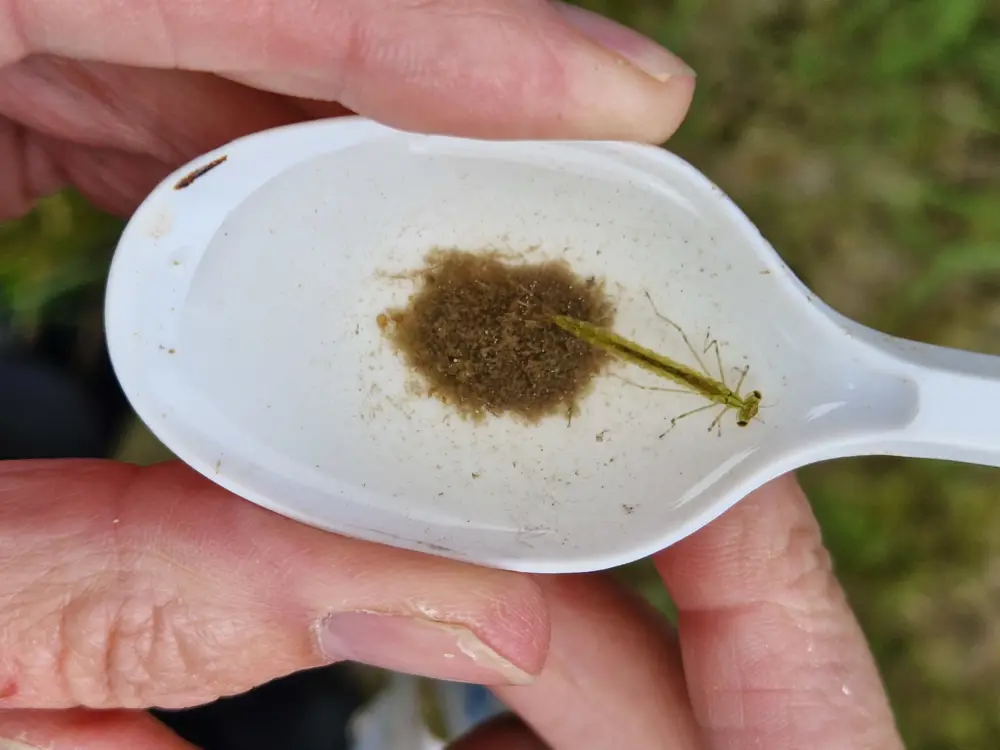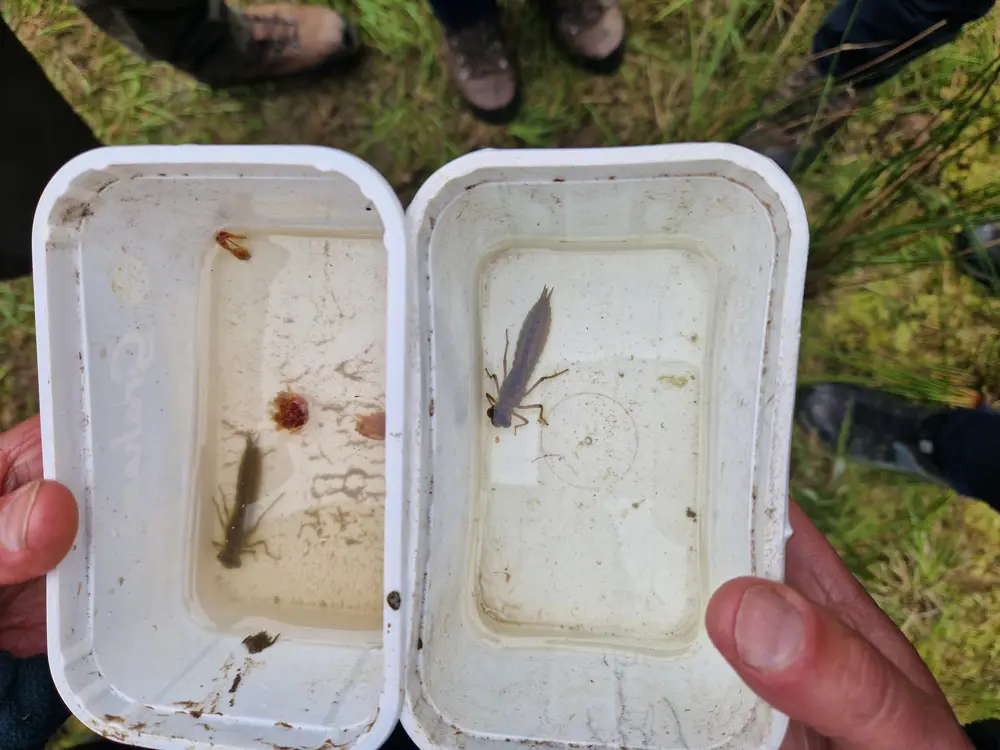If you build ponds, they will come

We've teamed up with the British Dragonfly Society to help protect and boost the population of some of the rarest dragonflies in the British Isles.
The new conservation partnership will focus on improving dragonfly habitat as a whole, but with a particular focus on six endangered or vulnerable species: the Northern Damselfly, Azure Hawker, White-faced Darter, Brilliant Emerald, Northern Emerald and the Variable Damselfly.
In the British Isles, three of these species only breed in Scotland: the Northern Damselfly, the Azure Hawker and the Northern Emerald.
“Scotland has lost a lot of its ponds over the years, and digging more will boost not just the dragonflies but also create habitat for a wide range of aquatic species, such as water beetles and pond skaters.’
Said our wildlife ecologist, Kenny Kortland.
“We’re also restoring peatland across Scotland and once that becomes wetter and boggier, we’ll also see increases in biodiversity, including some of the rarer species of dragonfly. Having a denser network of ponds, bogs and wetlands in the landscape will also allow such species to move north in response to the warming climate.”
We're going to be working with the British Dragonfly Society to train our staff to better survey the dragonflies, implement practical measures to improve their habitats and explore how peatland restoration processes could also benefit dragonflies.
Daniele Muir, Scotland conservation officer of the British Dragonfly Society, said: “Because FLS land is home to so many of Britain’s rarest species, we have an opportunity to make a huge impact.
“Climate change means many of our rare dragonflies are already struggling, their homes are shallow pools that are dying out. These beautiful creatures have been around since the time of the dinosaurs and it’s vital we protect them. We’ll be working with FLS to train their ecologists and foresters on survey techniques and provide practical advice on enhancing land for dragonflies.”
Re-ponding Scotland
Our ecology team has already been working on ponds as part of its commitment to biodiversity. As part of this project, we'll be creating ponds across the estate to make new homes for dragonfly species.
"Our overall aim is to enhance the ecological health of large parts of Scotland’s publicly owned forests and land, we want complex ecosystems with lots of species, including dragonflies. Creating new ponds will be part of the work, and that will be specific to each site and dragonfly species," said Kenny
Our teams will be working with Daniele Muir over the next few months to figure out where new ponds could be created and whether existing ponds should be enhanced to help dragonflies.
Kenny added “At some existing ponds we might simply cut back surrounding trees so there’s less shade. That will make the water warmer for dragonflies, and better for breeding.
“Anyone doubting the importance of dragonflies should remember that they eat midges.”
Daniele Muir agrees that dragonflies perform important functions but points out that one of those is bringing joy.
“There’s nothing nicer than seeing dragonflies flying around on a warm summer’s day next to a pond or a loch. They’re so beautiful and colourful and they really do lift the spirit.”
We've signed a three-year agreement with the British Dragonfly Society.

Nymphs caught during the survey training
Invertebrate training at Fetteresso Forest
Training for this new partnership has already begun with a session with our East Region. The team went to a timber forest currently undergoing open and woodland habitat restoration. The former quarry was developed into a pond which is quickly becoming an important site for many species, including the northern damselfly, newts, toads and frogs.
The team spent some time pond dipping and identifying dragonfly and damselfly nymphs and discussed what could be done to improve the pond further. This included tree felling work to reduce shade, works to deepen a section of the pond and creating new ponds on adjacent sites.